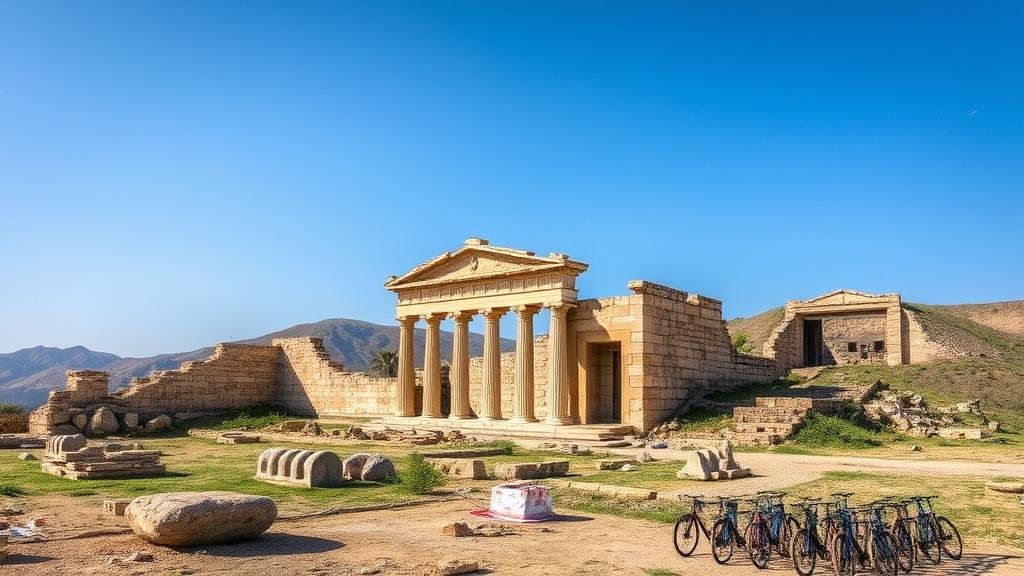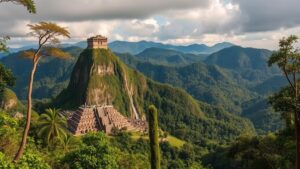The impact of climate change on preserving or exposing ancient ruins.
The Impact of Climate Change on Preserving or Exposing Ancient Ruins
Climate change is an urgent global concern that influences various facets of our environment. One of the areas most affected is archaeological heritage, particularly ancient ruins. These cultural treasures, which tell stories of our past, face significant threats from changing climatic conditions. This article delves into how climate change impacts the preservation of these ruins, emphasizing specific examples and real-world applications.
Understanding the Threats to Ancient Ruins
Ancient ruins are vulnerable to several climate-related issues, including rising temperatures, shifting precipitation patterns, and increased frequency of extreme weather events. These factors contribute to tangible threats such as erosion, flooding, and soil degradation.
- Rising Temperatures: The average global temperature has risen by approximately 1.1 degrees Celsius since the late 19th century, according to the Intergovernmental Panel on Climate Change (IPCC). Higher temperatures can accelerate the decomposition of building materials, such as stone and mortar.
- Extreme Weather Events: Climate change is linked to more severe hurricanes, storms, and floods. For example, Hurricane Dorian in 2019 significantly damaged the archaeological site of The Baths National Park in the Bahamas.
Case Studies: Loss and Preservation
Examining specific case studies highlights the nuanced impacts of climate change on ancient ruins around the globe.
1. Petra, Jordan
Petra, renowned for its rock-cut architecture and water conduit system, faces threats from flash floods exacerbated by climate change. The city has experienced increased rainfall and subsequent flooding, which not only erodes its sandstone structures but also worsens water management issues. Conservation efforts have become more stringent to preserve this UNESCO World Heritage Site.
2. The Great Wall of China
Sections of the Great Wall, stretching over 13,000 miles, are succumbing to erosion and landslides driven by increased rainfall and soil saturation. In the last decade, studies have indicated that heavy rainfall has doubled in some regions, prompting experts to adopt innovative preservation techniques. For example, the use of geotextiles has helped stabilize vulnerable areas.
3. Machu Picchu, Peru
Machu Picchu, an iconic Incan citadel, is facing increased visitor traffic while grappling with climate-induced erosion and landslides. According to Perus Ministry of Culture, around 1.5 million visitors flock to the site annually. To combat environmental degradation, authorities have implemented strict visitor limits and invested in infrastructure improvements designed to manage runoff and soil erosion.
The Double-Edged Sword: Exposure of Ruins
Interestingly, while climate change poses risks to many ancient sites, it may also lead to the discovery of previously hidden ruins. As ice caps melt and permafrost thaws, more artifacts and structures are becoming visible.
- Example – The Arctic and Alaskan Sites: Thawing permafrost in Arctic regions has revealed ancient artifacts, including tools and burial sites, dating back thousands of years, providing invaluable insights into past civilizations.
- Example – Ancient Roman Ruins: As coastal erosion progresses due to rising sea levels, certain Roman ruins uncovered along the Mediterranean coast, prompting archaeological exploration.
Preserving the Past: Strategies and Solutions
To mitigate the adverse effects of climate change on ancient ruins, a combination of technology, policy, and community involvement is essential.
- Using Technology: Advanced methods, such as 3D laser scanning, enable accurate monitoring of structural integrity and may assist in planning necessary interventions to protect historical sites.
- Policy Useation: Government and heritage organizations must prioritize climatic adaptation strategies, including sustainable tourism practices to limit site degradation.
- Community Engagement: Local communities should be involved in preservation efforts, educating visitors on the significance of these sites and the necessity of protecting them.
Conclusion
As climate change continues to evolve, the preservation of ancient ruins remains a critical concern for humanity. By understanding the threats posed by climatic shifts and embracing innovative conservation strategies, we can protect these invaluable links to our past while also adapting to our changing environment. Through collaboration between governments, scientists, and communities, a concerted effort can ensure that these ancient treasures endure for future generations. The lessons learned from ancient ruins can aid us in creating a resilient future amidst the challenges posed by climate change.



